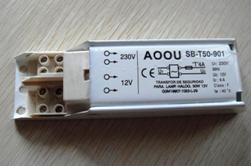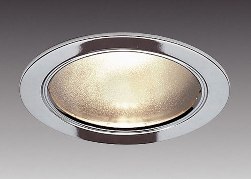Categories: Featured Articles » Electrician Secrets
Number of views: 28323
Comments on the article: 2
The specifics of the installation of lighting lines with electronic transformers
 For safety reasons, lamps with halogen lamps, designed for a reduced voltage of 12 volts, are widely used. For the installation of such spotlights in a household electrical network, it is necessary to use step-down transformers. But transformers, which many are used to in industry, are not suitable here because of their large size and weight. You can only use special electronic transformers.
For safety reasons, lamps with halogen lamps, designed for a reduced voltage of 12 volts, are widely used. For the installation of such spotlights in a household electrical network, it is necessary to use step-down transformers. But transformers, which many are used to in industry, are not suitable here because of their large size and weight. You can only use special electronic transformers.
Electronic transformers are assembled on semiconductor technology and their power, as a rule, is not large - no more than 500 watts. But such transformers are small, economical in operation and incorporate a built-in soft starter.
Each electronic transformer is equipped with terminals for connecting the wires of the high side (220 V) and low side (12 V). Moreover, low-voltage terminals, of course, more - to connect several fixtures. The length of the wire from the transformer to each lamp should be approximately the same and not exceed two meters. This will avoid losses in the low-voltage circuit and provide the fixtures with the necessary equal brightness.
The power of the transformer should be selected taking into account the safety factor. It should be approximately 25% higher than the total power of the fixtures in the group. This will prevent overheating of the transformer elements. Too small power of the lighting circuit - less than half the power of the transformer - will also not be good, since with a high electrical resistance of the line, the electronics simply will not allow the transformer to start.
When choosing the location of an electronic transformer, you need to remember that you need to provide access to it if you need repair, replacement or maintenance. Therefore, often the transformer, due to its small dimensions, can be located in an additional junction box. The main thing for the transformer is the removal of at least 20 centimeters from any heat sources, for example from the same halogen lamps.
 If the total power of a group of spotlights is too large and, for example, exceeds the mentioned 500 W, then several electronic transformers must be used, sharing the load between them symmetrically.
If the total power of a group of spotlights is too large and, for example, exceeds the mentioned 500 W, then several electronic transformers must be used, sharing the load between them symmetrically.
For the operation of luminaires powered by an electronic transformer, a copper cable with a cross section of 1.5 square meters is always enough. mm But if you want to save on materials, you can determine the exact required section. For this, first of all, it is necessary to calculate the working current, dividing the power of the lamp by the voltage value - 12 volts.
See: How to choose a wire cross section for 12 volt lighting networks
The required cable cross-section will be easy to find, based on the fact that the long-term allowable load current for a copper two-core cable is about 7 amperes per square. mm with any method of laying. That is, often a cable cross-section of 1 square. mm it happens that is called "for the eyes."
Alexander Molokov
See also at bgv.electricianexp.com
:
